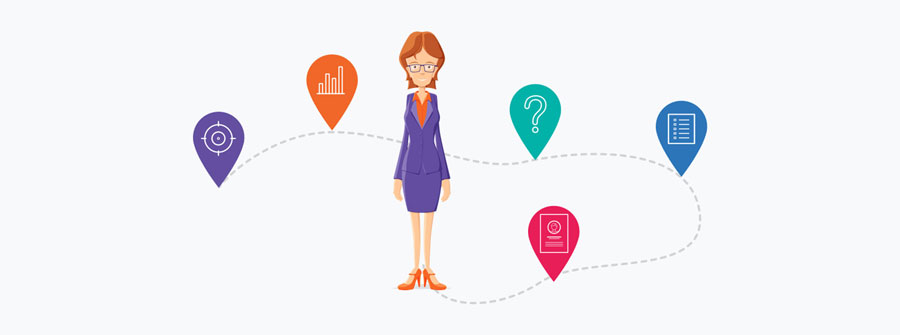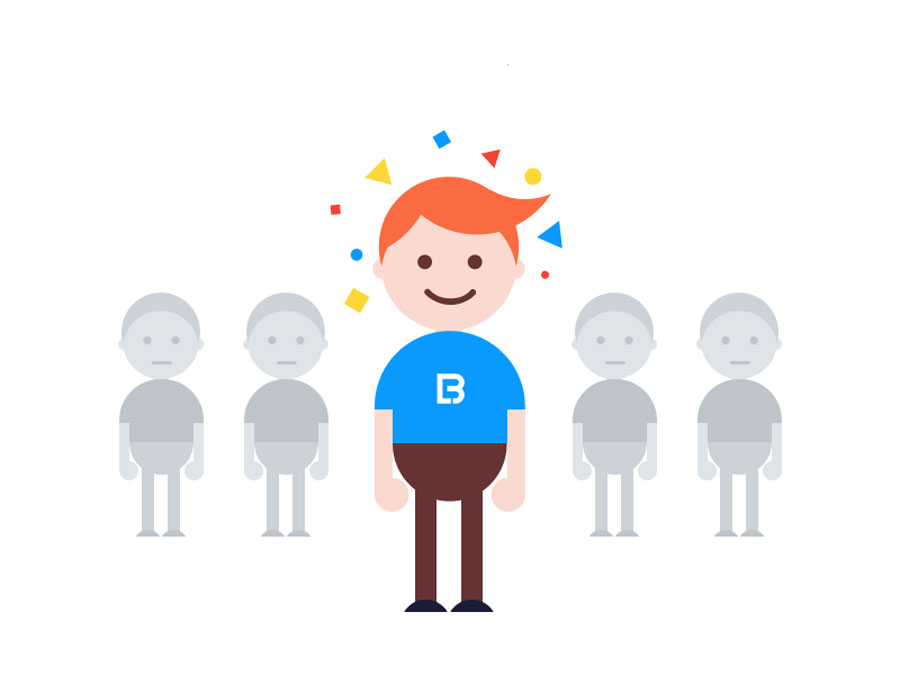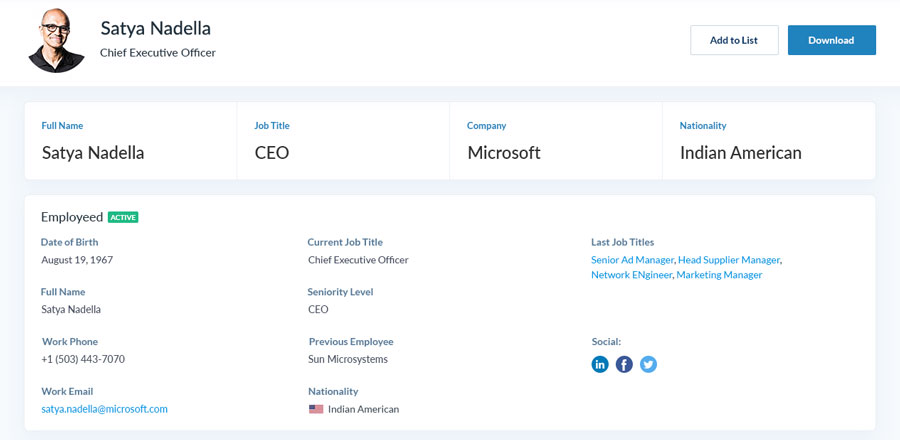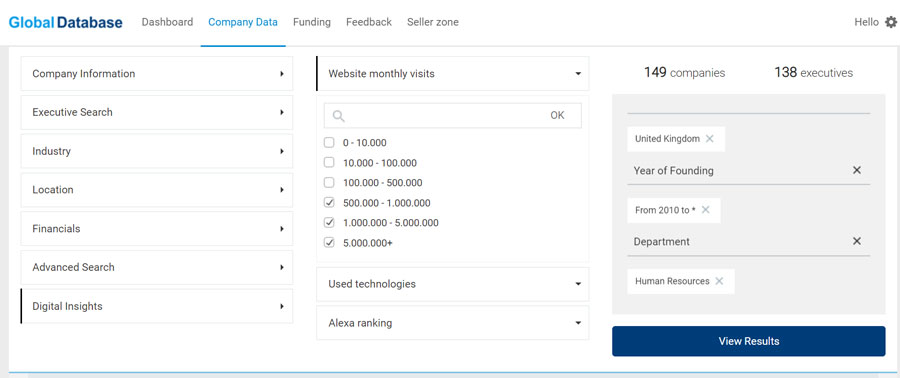You’ve probably been asking yourself too - why the buzz around ‘buyer persona’? Stats show that 44% of marketers have already experienced the power of buyer persona marketing. Some of them have achieved higher conversion rates (20%) as compared to those who don’t apply the value of buyer persona (12%) in their strategies.
In simple terms, buyer persona is the profile of an entity you’d consider your ideal customer. Some sources call it fictional or semi-fictional. However, we’d rather call it a theoretical representation that would encompass all the traits you’d like your customer to have. These traits could be defined based on a market research, on comprehensive data analysis of your current and former clients, or the result of the combination between research and analysis. Don’t forget that you should involve as many stockholders as you can in the process of identifying your buyer persona.
Building a Buyer Persona: Where to Start

First of all, be sure that you understand the difference between an ideal customer profile and buyer persona. In the first case, you get an understanding of where you should be looking for your next business partners. The latter also helps you build entire strategies around them so that you become attractive, and prospects would be more eager to find you and will do so easier.
When talking about B2C, building the buyer persona in the right way can boost a company’s revenues. The main idea behind this is that, when you know exactly who you want to sell to as well as the outstanding benefit your product can bring them, you just present it directly as THE solution for their needs. As B2C acquisitions are more impulsive then B2B, all you have to achieve is to understand and address exactly the emotion that would drive the consumer directly to your product.
For B2B deals, the emotions can still play a certain role, however its effect is significantly less impactful. For example, if your product helps to optimize some processes within a company, it may indirectly influence its bottom line. Therefore, the person who introduces such a product to the company, in the end, will become the person who has helped the company become more efficient. Thus, if this is applicable to the product you offer on the market, wrapping it with a beautiful bow saying “with this product, you are the one to laud for your company’s efficiency” can influence to a certain degree the final decision. Even if your lead is not a decision-maker, helping him or her see an additional motivation to use your product may increase the chances to close the deal. Don’t forget though that you should emphasize the very feature that brings positive change for that particular client. Otherwise, you’ll fail both your promise and the client’s expectations and we all know what this results in.
Ideally, once you’ve identified the buyer persona, outline in the same profile the goals, motivation, what they trust, their challenges and the solutions your product can provide.
Knowing your buyer persona equals knowing your audience - businesses you should target with your campaigns. To make sure though that you are building the right buyer persona, you should involve all your teams representing key areas of your company in this process. Defining this profile has to be a collective work. Sales departments, most often, are those who know the specific features of leads who are a prospect as well as the traits that help them understand soon that the lead is not going or not ready to close the deal. Consequently, collaboration on both content and email marketing strategies should add up to the precision of hitting the targets in the right way.
Having said that, you should not have just one buyer persona. Of course, this depends on the product you’re offering, as well as on the business types or industries you’re willing to address. Making several buyer persona profiles will help you use personalisation at max.

One of the best sources to base your buyer persona building process is your customer relationship management system. Depending on the one you’re using, there are different ways and places to focus on to find the most valuable information. Even though the data you can analyse in your CRM are mostly basic, be sure that they will form the fundamental part of your B2B buyer personas.
On the other hand, with multiple sources of data, you may get tempted to use them all. But you really shouldn’t. Identify the most significant features or types of your ideal business partners, and limit yourself to shaping your buyer persona in accordance with these. To disclose a secret here, we’d like to mention that the same main traits will serve you for lead scoring. But that’s a totally different topic.
Tips to Use Your Buyer Persona
Once your buyer persona is defined, it becomes the foundation for your future actions. Knowing who you are going to address will help you improve and adjust, if needed, as well as to accelerate your understanding of the ways to structure your marketing strategy, instruct your sales team, build all your content and plan all your other actions on the short and long-run.
Of course, you’d have to run a research. For a faster one, though, try to learn your target audience’s pain points, and address these directly by showing how exactly your product can meet these needs. This approach proves to be a very efficient one, regardless of the type of product you are offering or industry you are addressing: your sales team will be able to present the product to your prospects as an effective solution for their issues.

With a target audience research and knowledge of what you are looking for, you’ll easier accumulate plenty of leads. Obviously, particularly for B2B, just a small percentage of them all will become your customers, so you’d have to discern them for a better result. Having the buyer persona profile at hand will help you cherry-pick your high-quality leads. If you add well-thought lead scoring, you’ll know for sure whom you should contact first.
According to Aberdeen, marketers who apply buyer personas and who build their marketing strategies around them, rejoice 73% higher conversion rates compared to those who don’t. Now that’s a figure to think about.
You have your buyer persona - what’s next?
Once you are perfectly aware of the fundamental features of your buyer persona, you might want to use this knowledge to your advantage. As we’ve mentioned above, buyer persona-based strategies and actions result in attractiveness for prospects. On the other hand, you probably are not willing to just sit and wait to be found and contacted.
Among the best options you can apply this intelligence for is by combining it with business directories. For example, Global Database features a wide series of filters, which, when applied, will result in listings of companies that fit exactly your buyer persona profile.

In the example above, we assumed that the buyer persona we are looking for is a company, located in the UK, founded less than 10 years ago, that has a human resources department and the website traffic of which exceeds 500 thousand monthly visits. Making just a few clicks to check the needed filters, we can see that once we click the ‘View Results’ button we’ll get a list of 149 companies. No additional research needed, no extra time wasted, hence all the saved resources can be redirected to other marketing efforts and to keeping the buyer persona profiles updated.
[[form]]